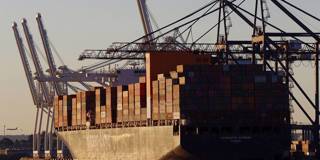The current bout of high inflation has many causes, but one major driver that remains under-recognized is the rise in global shipping costs. The rapid increase in transport costs last year was a harbinger of the current inflationary surge and indicated that price pressures might not be as short-lived as central bankers believed.
WASHINGTON, DC – In his Jackson Hole speech in August, US Federal Reserve Chair Jerome Powell made clear that curbing inflation is the Fed’s top priority. While the Fed has distanced itself from its assessment last year that the inflation pickup would be short-lived, the grounds for that assessment were tenuous even when made, given the many uncertainties about the drivers of inflation at the time. One such driver in particular, rising shipping costs, has been under-studied, despite being an important contributor to – and predictor of – inflation. Even last year, the surge in shipping costs was a canary in the coal mine pointing to the need for higher interest rates to counter building price pressures.

WASHINGTON, DC – In his Jackson Hole speech in August, US Federal Reserve Chair Jerome Powell made clear that curbing inflation is the Fed’s top priority. While the Fed has distanced itself from its assessment last year that the inflation pickup would be short-lived, the grounds for that assessment were tenuous even when made, given the many uncertainties about the drivers of inflation at the time. One such driver in particular, rising shipping costs, has been under-studied, despite being an important contributor to – and predictor of – inflation. Even last year, the surge in shipping costs was a canary in the coal mine pointing to the need for higher interest rates to counter building price pressures.